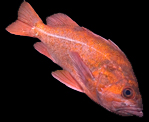
Lingcod, Ophiodon elongatus
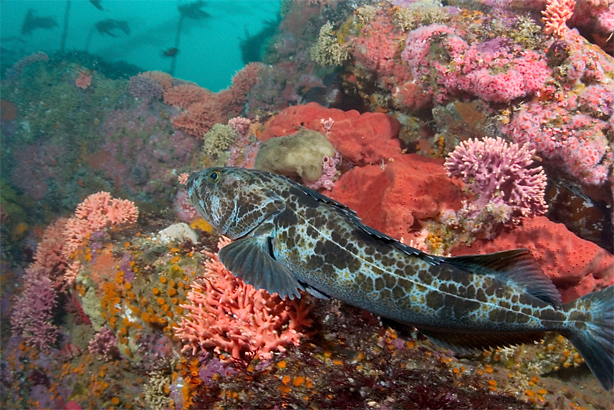
Being ambush predators, lingcod (Ophiodon elongatus) are relatively
tolerant of curious photographers. However, a fish that just sits on the bottom
often makes for a pretty boring picture. Thankfully, lingcod behavior is rather
predictable. With a little luck, one may be able to steer a ling into a desired
posture. This is one of my more successful examples of this. The biggest
challenge with such shots is getting the focus point correct. I have drawers
full of blurry lingcod pictures that I'm not going to show you. Another
difficulty when taking this kind of shot is that you usually only get one
chance. After that, the subject is sufficiently annoyed that you're going to
have a hard time getting close enough.
"East Pinnacles", Carmel Bay, California
January 23, 2005
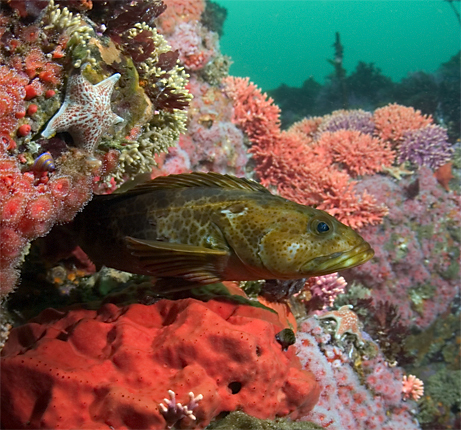
A somewhat drab lingcod (Ophiodon elongatus) departs a crevice framed by
a leather star (Dermasterias imbricata) and an unidentified red sponge.
"East Pinnacles", Carmel Bay, California
July 3, 2005
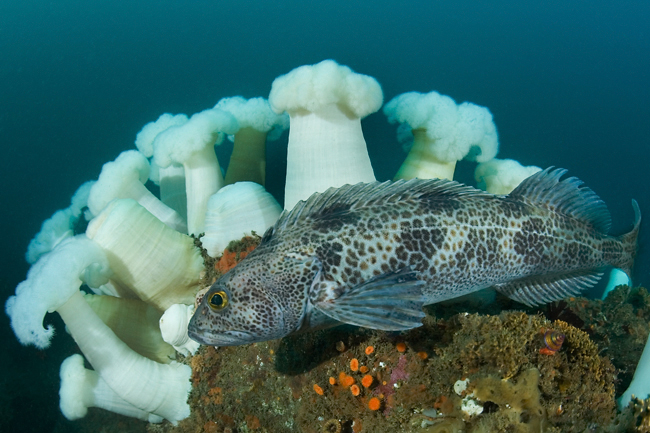
Large lingcod (Ophiodon elongatus) are seldom seen in areas under heavy
fishing pressure. At Hopkins Deep Reef, one encounters mostly runty ones like
this. Though, the fisherman's heartbreak may be the photographers joy: small
lingcod are nicely proportioned against a backdrop of Metridium
farcimen.
"Hopkins Deep Reef", Monterey Bay, California
January 21, 2007
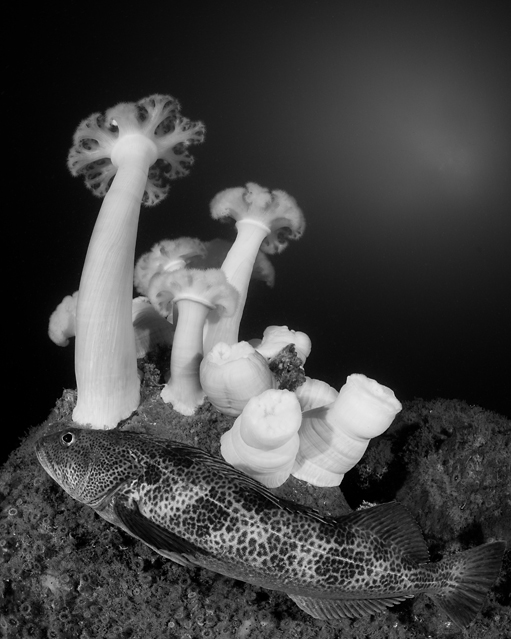
I spent a little time fussing with various pictures I'd taken, converting them
to black and white. I quickly discovered that while this seemed like a good
idea, the results usually look rather wretched. So, I decided that maybe I
should be thinking about black and white while still in the water. This is the
first shot I took with black and white conversion in mind. Metridium
farcimen and lingcod (Ophiodon elongatus) are both high contrast
elements. Of course, I would have liked a wonderful sunburst in the background,
but conditions didn't provide for this. Instead, I got a sun-blob.
"Hopkins Deep Reef", Monterey Bay, California
February 11, 2007







